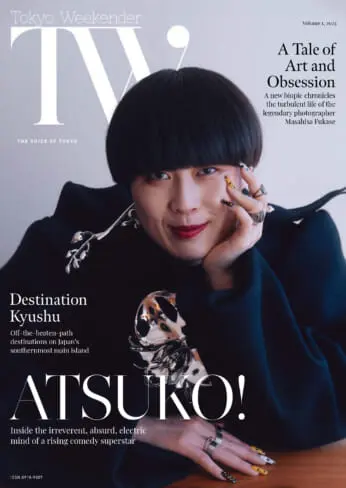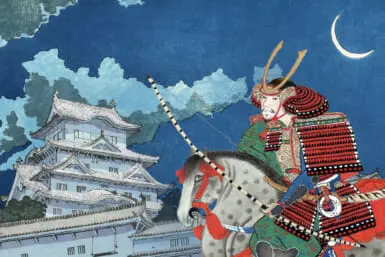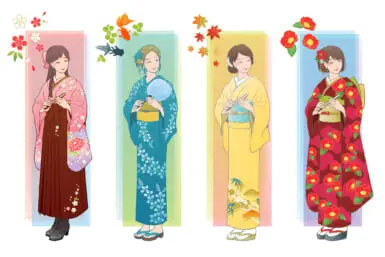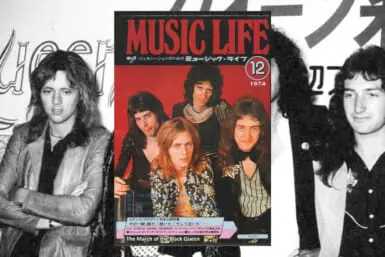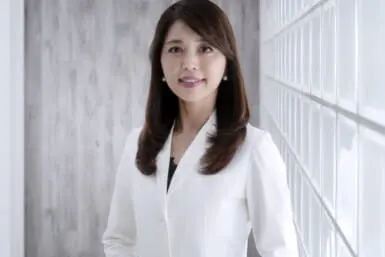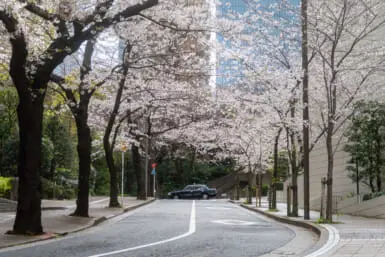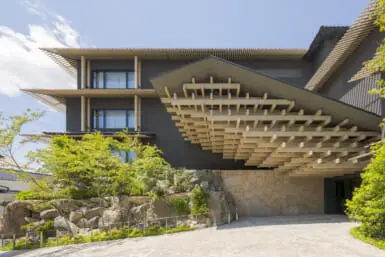Japanese school uniforms, known as seifuku or gakuseifuku, are iconic symbols of Japanese culture, recognizable through manga, anime and films. From the gakuran worn by Jotaro Kujo and Josuke Higashikata in Jojo’s Bizarre Adventure to the iconic sailor uniforms in Sailor Moon, these uniforms have evolved significantly over time.
They have undergone significant transformations over centuries, reflecting Japan’s political shifts, cultural values and international influences through the lens of school fashion.
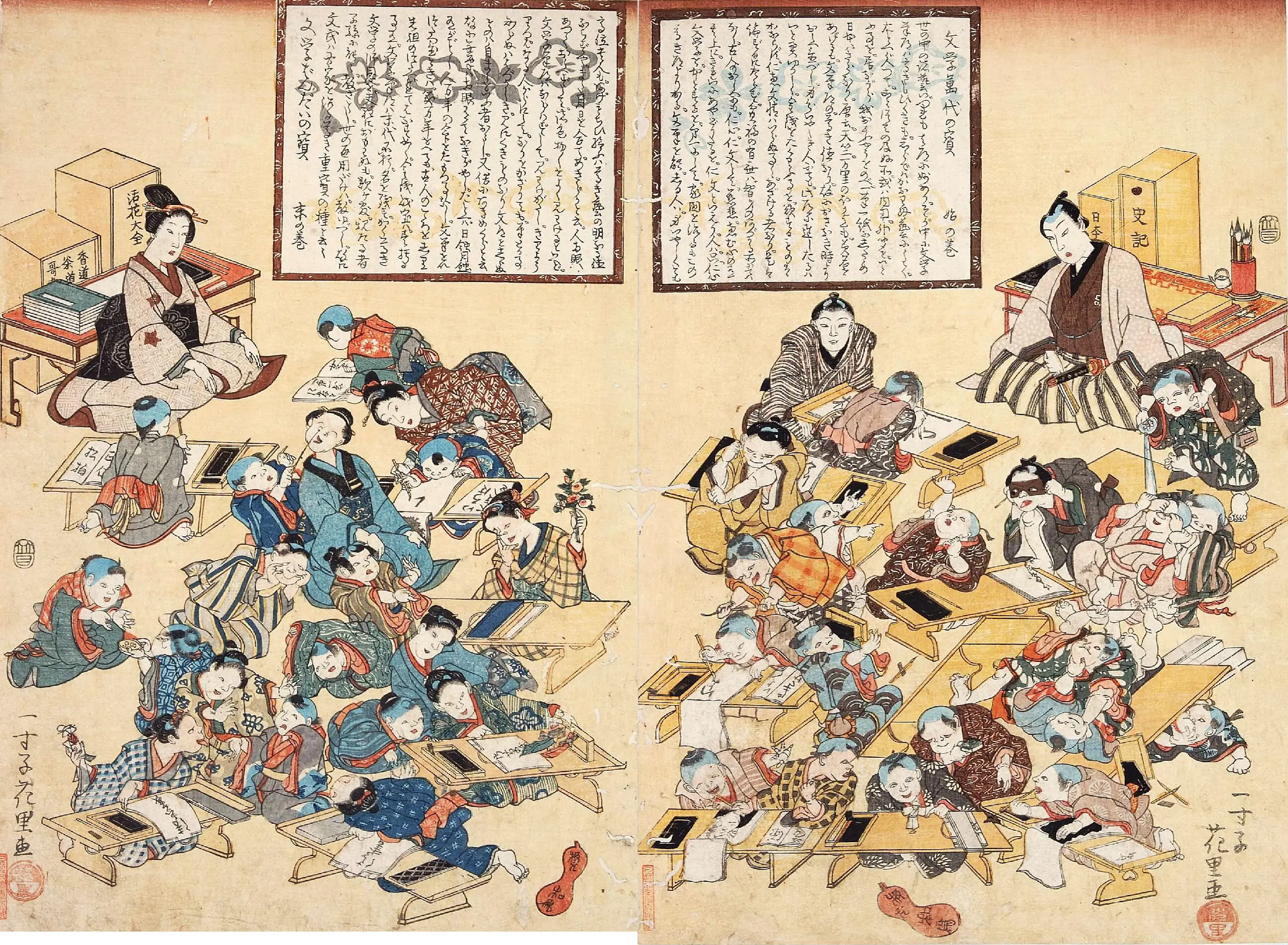
Courtesy of Wikicommons – Terakoya Issunshi Hanasato – Tokyo Metropolitan Library
The Edo Period (1603–1868): The Pre-Uniform Era
During the Edo period, formalized education existed primarily in terakoya (temple schools), which originated in the Muromachi Period (1336–1573). As the concept of standardized “school uniforms” had not yet emerged in Japanese society, children attending terakoya typically wore traditional Japanese clothing of the time, such as simple kimono or hakama, with their attire clearly reflecting their social status and family background.
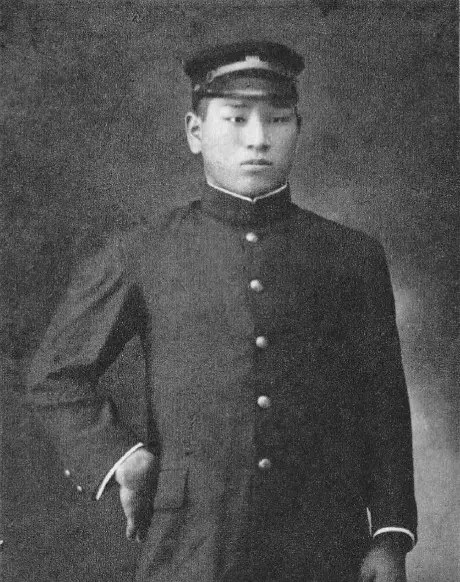
Courtesy of Wikicommons – The gakuran school uniform and cap worn by boys during the Meiji Period
The Meiji Period (1868–1912): The Birth of Modern School Uniforms
The Meiji Restoration marked Japan’s rapid modernization and the beginning of standardized education throughout the country. Following the Gakusei, or Education System Order of 1872, the first Western-style uniforms were gradually introduced to Japanese schools, signifying the nation’s commitment to modernization. The first standardized school uniform for boys started in Gakushuin, a prestigious academy attended by the Japanese nobility.
Male uniforms were deliberately modeled after naval cadet uniforms, featuring dark-colored, high-collared gakuran with brass buttons. For female students, traditional hakama skirts worn over kimono became standard attire.
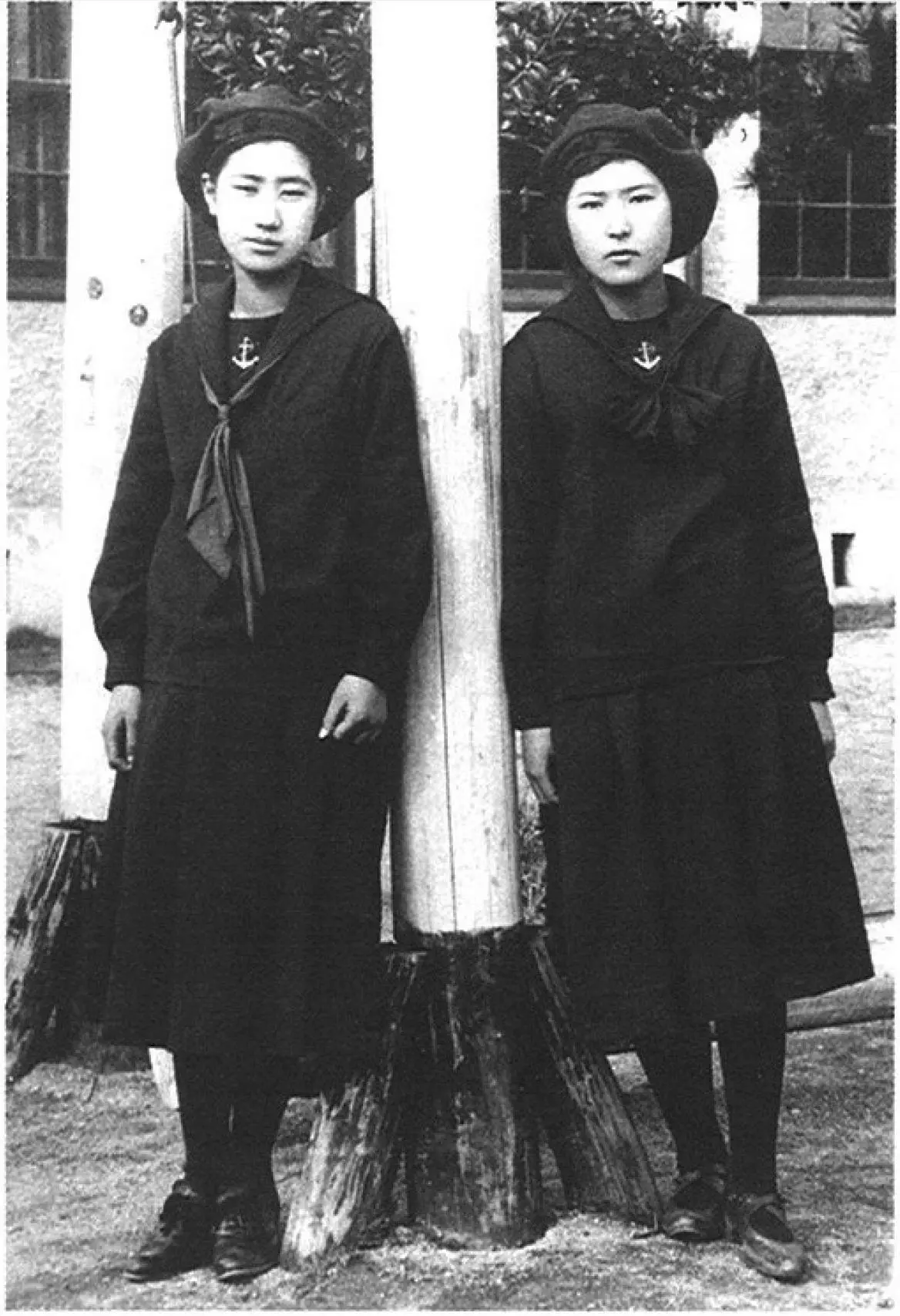
Courtesy of Wikicommons – girls wearing the serafuku in Fukuoka Jo Gakuin
The Taisho Period (1912–1926): Refinement and Sailor Suits
The Taisho era brought further Western influences and introduced what would become the most iconic Japanese school uniform. In the early 1920s, the familiar sailor-style suit for girls was first introduced at Fukuoka Jo Gakuin and subsequently spread throughout the country.
These distinctive uniforms were directly inspired by the British Royal Navy attire, reflecting Japan’s continuing fascination with Western maritime powers. The sailor suit represented not only modernity and Western ideals but also functioned as a visual break from traditional gender restrictions, allowing young women greater freedom of movement and a sense of participation in Japan’s modernizing society.
Boys, meanwhile, continued to wear the military-style gakuran, which had, by this time, become firmly established as the standard for male students throughout the country.
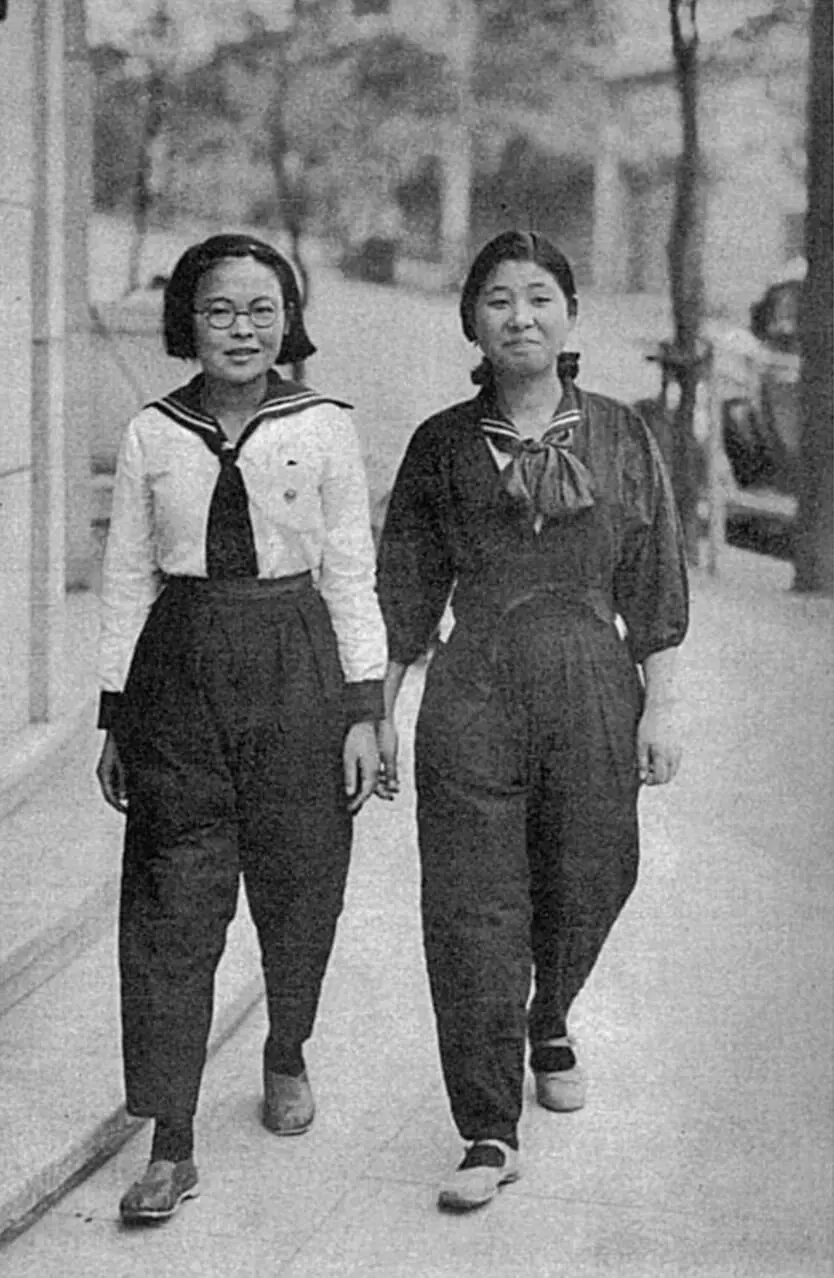
Courtesy of gendai.media – girls wearing sailor suit top and monpe work pants, 1937
The Early Showa Period (1926–1945): Militarization
The increasingly militaristic climate before and during World War II profoundly affected school uniforms and their social significance. Boys’ uniforms evolved to become even more military in style, often incorporating caps and simpler designs that emphasized practicality for physical training and preparedness.
During the wartime shortages, uniforms were necessarily simplified, with girls sometimes wearing monpe work pants instead of their usual attire due to fabric rationing and the need for practical clothing during air raids or evacuation drills.
The Post-War Showa Period (1945–1989): Standardization and Rebellion
After World War II, school uniforms evolved within the context of economic recovery and eventual prosperity that defined this era. Under American occupation, education reforms attempted to remove the most overt militaristic influences from schools, though the basic uniform styles remained largely intact due to their practicality and entrenched tradition. Throughout the 1950s and 1960s, a period of standardization solidified the classic image of Japanese school uniforms that would continue until today.
However, from the late 1960s to the early 1970s, school uniforms faced a backlash from student movements criticizing them as symbols of authoritarianism, leading some urban schools to abandon them. In the late 1980s, many schools shifted from traditional sailor uniforms to blazers, boosting uniform variety and improving their image.
In the 1970s and 1980s, however, youth rebellion manifested through uniform modifications, as sukeban girl gangs and yankii boy delinquent groups deliberately altered their uniforms — lengthening skirts, modifying collars, or wearing pants looser than regulations permitted — as visible acts of defiance against school authority.
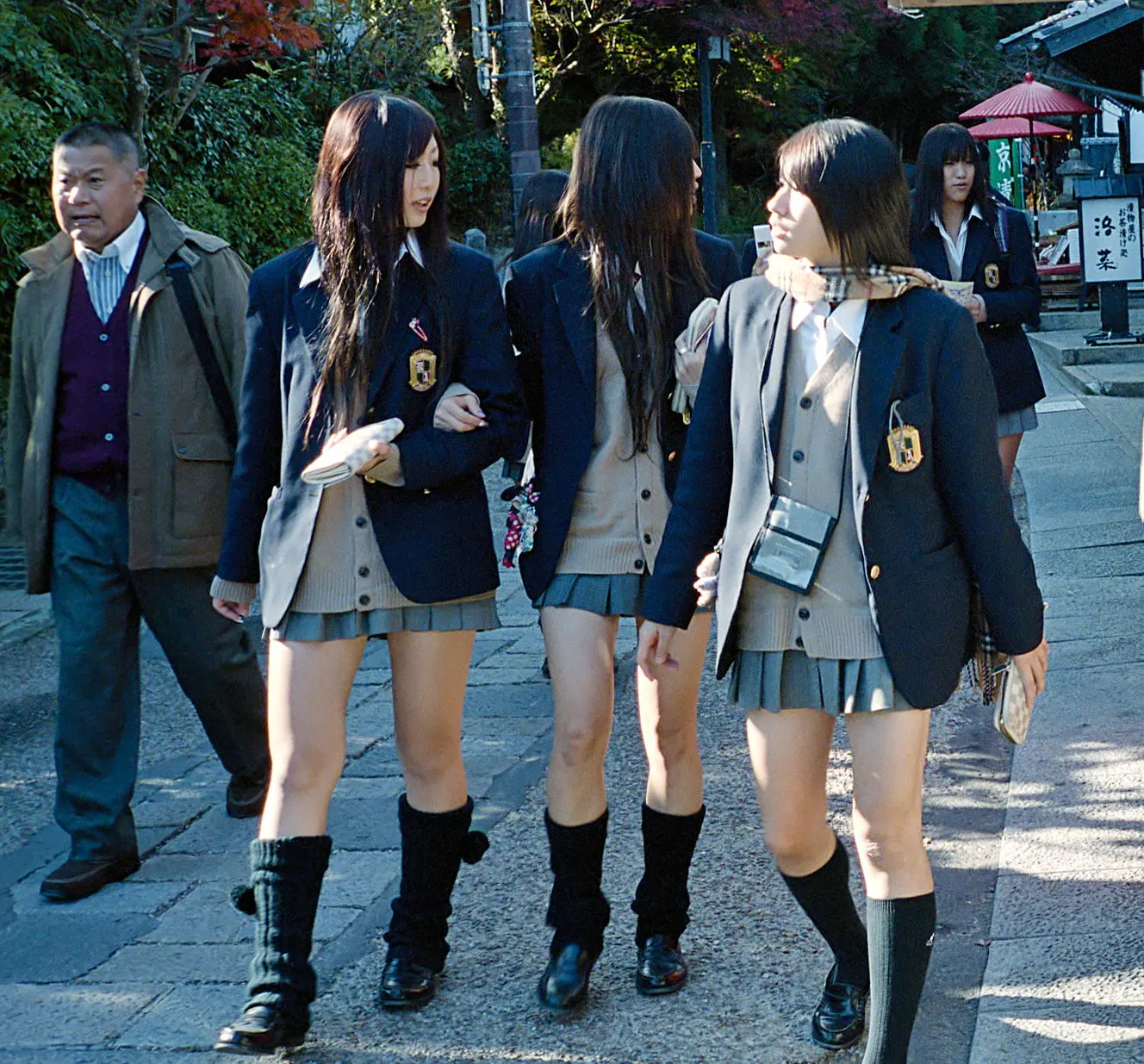
Courtesy of Wikicommons – Schoolgirls in kogyaru fashion
The Heisei Period (1989–2019): Diversification and Innovation
The Heisei era brought significant changes to uniform designs as schools responded to social evolution and market forces. Western-inspired blazers and skirts became more prevalent in urban areas and private schools, as they were seen as more modern.
The collaboration between the fashion brand Eastboy and the magazine Seventeen in the early 2000s led to Eastboy’s uniforms becoming a symbol of Heisei-era uniform culture, particularly among high school girls.
The gyaru subculture also influenced uniform styling, with loose socks and ultra-short skirts becoming a fashion statement worn with uniforms. Notably, luxury branding also found its way into school uniform creation, with the controversial Armani uniforms introduced at Tokyo’s Taimei Elementary School representing the peak of this trend.

The Reiwa Period (2019–Present): Inclusivity and Utility
The current Reiwa era has witnessed accelerating changes in uniform philosophy as schools adapt to contemporary values and needs. Many manufacturers have introduced practical improvements through modern technical fabrics featuring stretch, moisture-wicking properties and stain resistance, making uniforms more comfortable and durable for daily wear.
Environmental consciousness has led to a sustainability focus, with eco-friendly uniforms using recycled materials like polyester made from plastic bottles emerging as options for environmentally-minded schools and communities.
Many educational institutions now offer gender-neutral uniform options, allowing students to select accessories like ribbons and ties regardless of their gender identity, reflecting broader social conversations about gender expression and inclusivity in Japanese society.
